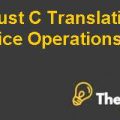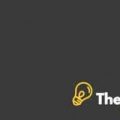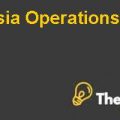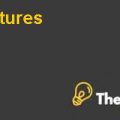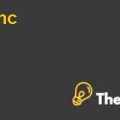
Zara’s Business Model or Strategy
The company’s business strategy was based upon the quick delivery of latest and new fashion apparels with high inventory turnover rate and provided an opportunity to the store managers to keep updates not only regarding their own in-store inventory but also the in-store inventory of the other stores in the retail chain. This had enabled the company to maintain an effective re-distribution and replenishment facility of required stock across the entire retail channel and enabled them to track accurate inventory and achieve quicker delivery time. The company had achieved a sustainable competitive advantage through this strategy and became capable of understanding the in-depth data regarding the customer’s preferences and changing demands in different time periods and at different locations. The business model comprised upon a complete set of four stages that were necessary for the success of a business in the fashion retail industry, i.e. design, distribution, manufacturing and sale of the finished goods in the company’s owned retail stores. The company was using vertical integration in their business model, which enabled it to shorten the inventory turnaround time with high flexibility of understanding the changing market trends that had minimized the fashion risk to the minimum possible level.
Strategic Alternatives
In order to solve the above mentioned problems and on the basis of the above analysis, I will like to present the following three alternatives in front of the executives of the company.
- Status Quo
The company should retain the DOS Operating System for their POS terminals because it has been using this system for the 1st integration of IT function into its operations.
Pros: - It is easy to use, inexpensive, require very low levels of IT support function, consistent, can be used for a long time because there is a very low risk of any sort of modifications or updates from the Microsoft. The In-house IT function of the company will get freedom of trying new and innovative ideas for developing in-house support facility for the DOS based POS terminals.
Cons: - It will expose the company’s sustainability to a risk of any sort of up gradation in the hardware used by the company as its POS terminal. Due to increasing popularity and expansion of the company’s operational infrastructure, it will be difficult for it to continue without the development of an appropriate channel that provides a link between the stores and corporate office. It will increase the administrative overheads of the company by recruiting more people to run the IT function.
- Upgrade the Operating System for their POS Terminals
This will increase the communication among stores of the company within the company’s retail channel.
Pros: - This will reduce the company’s dependency over the hardware vendors because if the machine manufacturers modify their current machine; this will not affect the performance of the company as it has already changed the one it has. All the stores of the company will be able to transfer all the stock related information through a centralized network to one another, which will enable them to keep their inventory updated. It will also increase the efficiency of the store managers in determining the in-store inventory level.
Cons: - It will require intensive capital investment for the purchase of new machinery and equipments. Due to lack of a specific Chief Information Officer in the company, it will be difficult to make an effective decision because it can create problems if the people have different or opposite views. It will require the company to hire a professional IT support team in order to train the store managers about how to use the new machines and resolve other complex software related issues.
- Should Focus upon the production of long lasting cloths
Instead of making huge investments for integrating changes into its IT infrastructure, the company should focus upon the production of long lasting cloths with classical designing.
Pros: - It will increase the customer base of the company’s products and help them to create a higher brand loyalty. It will help the company to target price and quality conscious customers, which covers a broader market share in the industry. It will increase the rate of returning customers.
Cons: - It will increase the direct manufacturing cost of the company because now the company will be required to use high and expansive quality fabric, which will reduce its gross margin over sales. It will also require the company to change their overall business model...............................
This is just a sample partial case solution. Please place the order on the website to order your own originally done case solution.


